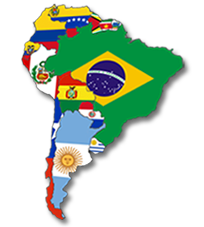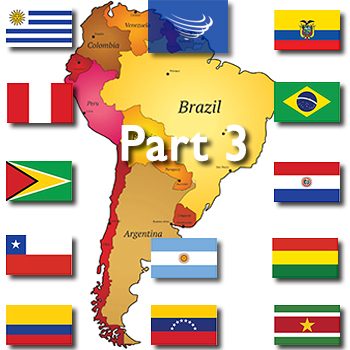Focus on Latin America: The Seaborne Advantage
New entrants in the market will rely heavily on a mix of hub-and-spoke network configurations as well as interlining between long-distance shipping routes using transshipments through the Caribbean Triangle.
Cathy Roberson, an analyst with the London-based think tank Transport Intelligence, says “ocean is still the key,” for U.S. shippers in Latin America.
“We don’t anticipate a shift to air for many manufacturers doing business there,” she says. “The road network in regions is so bad that shipments by air remain problematic and expensive.”
Like Jean-Paul Rodrigue, Professor, Department of Global Studies and Geography, Hofstra University, she agrees that new entrants in the market will rely heavily on transshipment through Caribbean Triangle. This comprises a mix of hub-and-spoke network configurations as well as interlining between long-distance shipping routes.
Furthermore, the advantages gained in terms of network interconnectivity and better use of ship assets outweigh the additional handling costs that transshipment entails.
Michael McDaid, who is charged with marketing, strategic planning & yield analysis, for Sea Star Line, LLC in Miami, notes that U.S. shippers currently doing business in the “triangle” are well poised to enter Latin America when they see opportunities there.
“Shippers already active in the Puerto Rico trade have a platform for going beyond the Caribbean into South America,” he says. “Sea Star partners with its customers to find mutually beneficial expansion opportunities when possible.”
This type of collaboration is taking place on far larger scale within the framework of the American Association of Port Authorities (AAPA). Kurt Nagle, AAPA president and chief executive officer, says that the recently-concluded 22nd Annual Latin American Congress in Bogota, Columbia, focused on the mutual benefits of developing infrastructure.
“Increasing North-South trade can benefit not only ports, but the economic vitality, job opportunities and quality of life for people throughout the Western Hemisphere,” he says.
Similar to here in the U.S., the challenge for many Latin American ports is in how to be able to advance and fund needed infrastructure development projects, both in terms of port facilities and the connecting infrastructure on the land- and water-side, says Nagle.

More on Latin America
- A Renewed Look at Doing Business in Latin America
- América Latina: Opportunities Abound, but Proceed with Care
- Focus on Latin America: Transportation and Regulatory Infrastructure
- Focus on Latin America: Brazil, Argentina, Chile
- Focus on Latin America: The Seaborne Advantage
- Doing Business 2014: Latin America (paper)
Article Topics
The World Bank News & Resources
Increased Policy Uncertainty & Maturing Global Value Chains Weakened 2016 Trade Growth Trade Developments in 2016 U.S. Oil Closes Below $40 a Barrel for 1st Time in Nearly 4 Months Crude Oil Crashes Below $30 a Barrel for the First Time in 12 Years Understanding the Plunge in Oil Prices: Sources and Implications Customer-Driven Rail Intermodal Logistics: Unlocking a New Source of Value for China Containers on Rail: China’s Next Big Opportunity in Supply Chain Logistics More The World BankLatest in Supply Chain
Ranking the World’s 10 Biggest Supply Chains The Top 10 Risks Facing Supply Chain Professionals Walmart’s Latest Service: Ultra Late-Night Delivery Dollar Tree’s Oklahoma Distribution Center Decimated by Tornado The Era of Self-Driving Tractor-Trailers Set to Begin Is the Trailers as a Service (TaaS) Model Right For Your Business? Why Grocery Shoppers are Leaving Stores to Buy Their Food Online More Supply ChainAbout the Author














